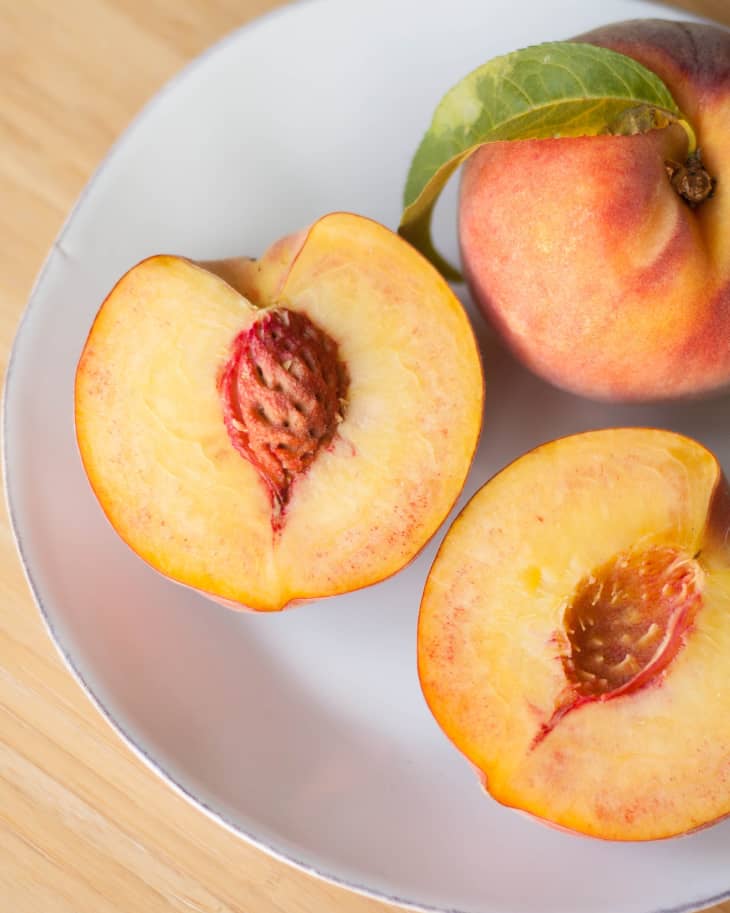The Best Way to Pick a Perfect Peach
We’re fast approaching the peak of stone fruit season, and one of the best summer experiences you can have is biting into a perfectly ripe, fragrant, and sweet peach. A peach so good you don’t mind the sticky juice that’s running down your chin and fingers, a peach you don’t want to share with anyone else.
But how do you pick a peach that’ll be that good? Here are a couple of pointers to help you pick the perfect peach.
We spoke to Tory Torosian of Tory Farms, who sells peaches and nectarines at San Francisco’s Ferry Plaza Farmers Market, and he gave us a few tips on how to select the best peaches.
1. Try to find local peaches.
Local peaches don’t have to travel as far, so they can be picked when they’re ripe. Peaches that have to be shipped tend to be picked underripe so that they hold up better as they’re moved around.
Farmers markets are your best bet for ripe peaches and knowledgeable farmers who can guide you in the buying process. Torosian says he only picks what’s ripe, usually from the top of the tree. Other growers may pick the whole tree at once, which yields peaches of varying degrees of ripeness, so it’s worth finding a friendly face who can tell you their farming practices and help you pick out peaches until you get the hang of it yourself.
2. Taste, taste, taste!
Always take full advantage of samples if they’re available, especially if more than one variety of peaches are for sale. Some people like the sweetness of white peaches, while others like the tart complexity of yellow peaches, but you’ll never know which one you like unless you taste. Note the names of the ones you liked and start shopping.
3. Look for color first.
While a fragrant peach is always a good sign, it’s not the main indicator of whether or not it will be good- color is. Peaches should have vibrant tones and colors. Keep in mind, though, that sometimes a leaf was shielding part of the peach so there might be some parts of it that received less sunlight (making that part lighter in color). Just make sure that those parts don’t have any green tones, which is a sign that the peach was picked too early.
4. Start (gently) squeezing.
Peaches get sweeter and juicier as they ripen. Squeezing them will tell you what stage they’re at. Gently press or squeeze the shoulder and tip (where the stem was) – if it just starts to give, it’s ripe and ready to eat. If the peach is still firm, it’s great if you like crunchy peaches or want to toss them into salads since they’ll hold up better.
Remember that if you want to buy peaches that you’ll eat over a period of a few days, you should buy varying degrees of ripeness to match your eating timeline.
5. Store them carefully.
Once you get the peaches home, store them at room temperature shoulder (stem) side down, preferably in a single layer to avoid bruising. Torosian even advises lining them up in the order of ripeness so you know which one to eat next.
If the peaches ripen before you get to them, they can be stored in the refrigerator for a couple more days, but eat them before they start to get wrinkly, which is a sign that they’re starting to dry out.
Thanks Tory!
